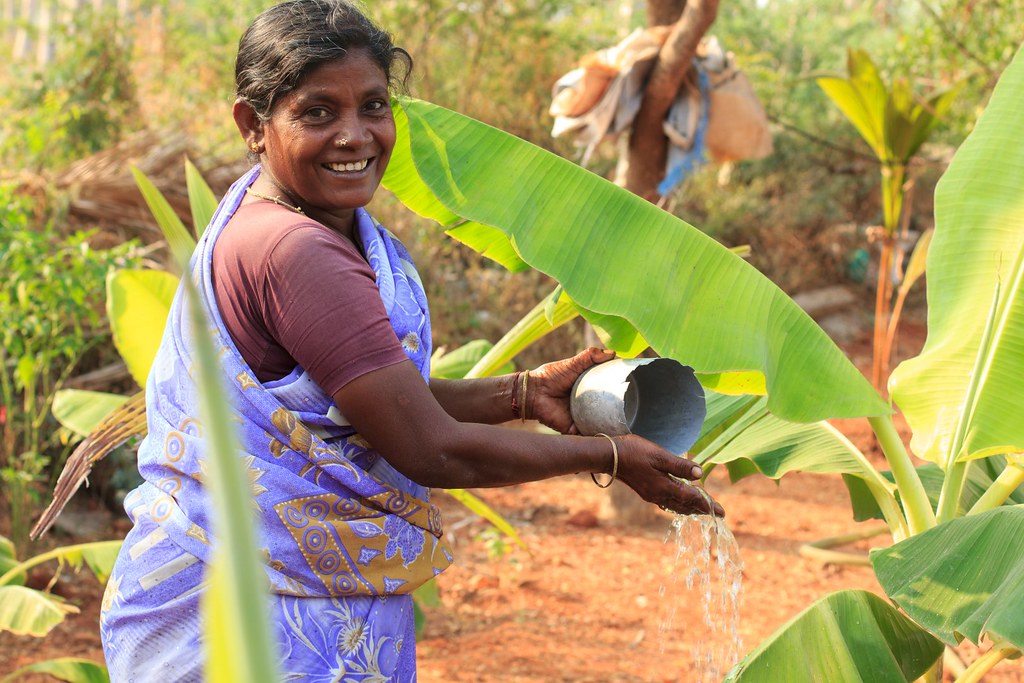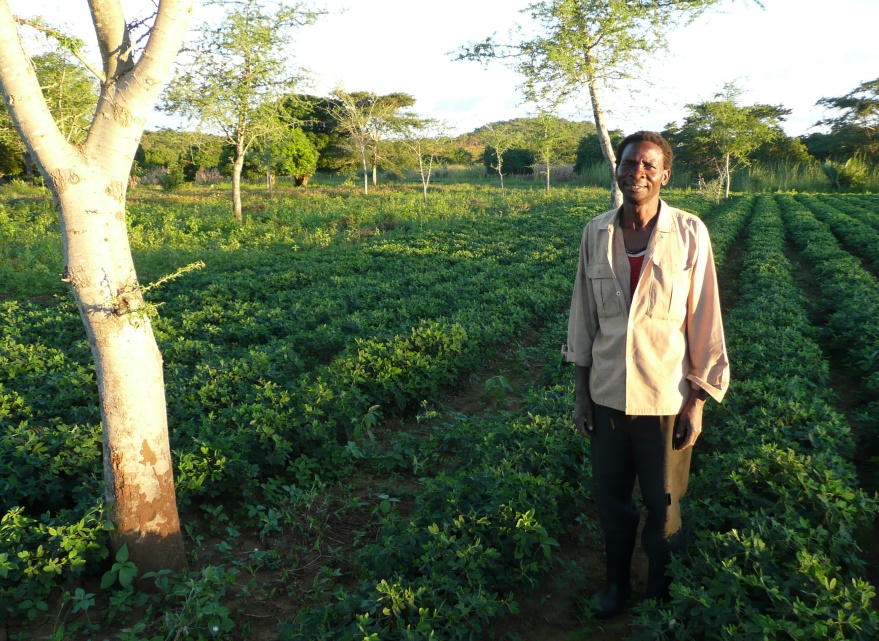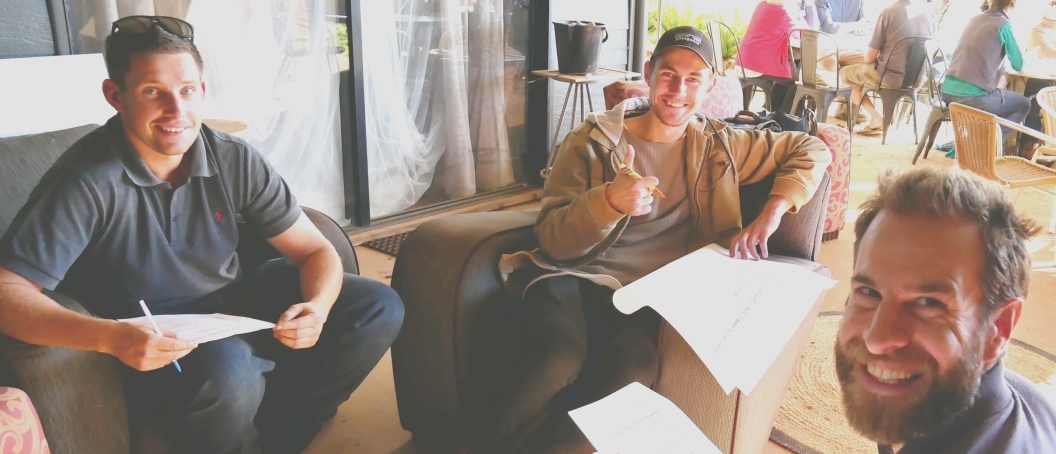With agriculture, a major contributor to the climate emergency, some of the world’s largest food and agricultural businesses, through the Sustainable Markets Initiative, have called for the uptake of regenerative agriculture to triple by 2030.[1] For this to happen, we need to make regenerative agriculture more attractive to farmers.
Until recently, the uptake of regenerative agriculture has been limited mainly to the ‘early adopters’. These are farmers who more readily embrace new ideas, especially those driven to change their practices by deep-seated environmental ethics. With the increasing frequency, range and severity of extreme weather events, more farmers are joining them, experiencing firsthand the sense of urgency that often triggers rapid behavioural change.[2][3][4]
Our Challenge
Our challenge is making regenerative agriculture more attractive to the remaining farmers.
According to the diffusion of innovations theory, the ‘early majority’ of farmers (about 34%) will only change when they believe that regenerative practices will work for their growing conditions and production systems.[5]
However, the change must also enhance their income and food security. Asking farmers to bear the burden of the systemic problems with agriculture has never gained sufficient traction. Like virtually everyone else, security is one of the core values driving farmers’ behaviour. As Seth Godin, a leading thinker in marketing comments, one of the “challenges with the environmental movement is that it has been trying to sell less when everything else in our culture is about more.” [6]
Recognising the need for economic incentives, the European Union, the United States, and a few other countries financially support farmers using regenerative practices. A growing number of programs also provide income support through incentive payments for environmental services like carbon sequestration, biodiversity, and improved water quality. These programs get a lot of media attention, but globally few farmers can access this support, and there are accountability issues with some schemes.
For the most part, regenerative agriculture advocates rely on the lure of low-cost organic and biological inputs to make the short-term economic case for adopting regenerative practices. For farmers able to source ingredients from their farms, this is where the real cost savings get made.

Recognising this, some provincial governments in India actively encourage farmers to use Zero Budget Natural Farming. However, this approach has a significant drawback if practised with standard cropping techniques. Research shows it may lead to the exhaustion of nutrients and organic matter in the soil.[7]
The reason given is that many participating farmers have limited supplies of manure, crop biomass and tree prunings for mulch, and their biological fertilisers provide few nutrients.[8]
Like most small-scale producers, these farmers can’t afford to outsource their nutrients by buying in products like compost from municipal recycling facilities and feedlots.
So what’s the Solution?
How else can we incentivise farmers to use regenerative practices?
We increase the uptake of regenerative agriculture using an eco-logical approach that re-frames regenerative agriculture from improving the symptoms of poor growing conditions, like low levels of organic matter, nutrient deficiencies, and insect pest issues, to tackling these issues at their source.
By repairing the ecosystems underpinning their production systems, farmers benefit from the free ecological services functioning ecosystems provide.[8][9] They create resilient production systems lessening the risks associated with extreme weather events and dramatically lowering their production costs (without sacrificing their yields) by reducing their reliance on external inputs. They harvest healthy food with their soils naturally supplying nutrients to their crops, insects and birds controlling most of their pests.[10][11]
For example, soil ecosystems have fallen into disrepair because, in maximising plant growth for crops or feeding livestock, we have neglected the food supply to the soil organisms managing these systems. Our soils need complex processes and functional connections driven by biodiverse communities of microbes and other soil organisms. These processes improve soil structure, increase organic matter and the carbon it contains, recycle nutrients and supply them to plants. With billions of years of research and development, providing our soil organisms with the resources to do the job makes sense!
Growing food eco-logically isn’t a new idea. The approach has been tried, tested, and proven effective by indigenous farmers worldwide using time-honoured traditional practices that maintain self-fertilising production systems. There is also an increasing number of conventional farmers to guide and give us confidence in applying the principles of this eco-logical approach.[12]
Farmers achieve more by reducing their production costs and sustainably intensifying their production using the opportunities provided by expanding vertically, developing polycultures and integrating livestock.
For example, in Australia, Colin Seis has reduced his annual input costs by over AU$ 120,000.[13] He delivers multiple products – cereal crops, native grass seed, sheep wool and meat- using time-controlled rotational grazing to enable him to vertically stack crops with native grasses.[13] The carbon in his soil has increased by 203% in 10 years![13]
Another example is the massive farmer-led regeneration of open woodlands across the Sahal in Africa, begun in response to the severe droughts in the 1980s. Farmers in this region changed their growing practices seeing their neighbours experiencing better protection against drought, crop and livestock production. The trees allow farmers to produce extra fertiliser, fodder and forage for livestock and to diversify their income streams with tree crops, firewood, construction timber, pollen, and nectar for bees. [14][15]
Where there is data, for the 2,700-hectare Humbo Community Managed Natural Regeneration Project in Ethiopia, 181,650 tonnes (net) of carbon dioxide was removed from the atmosphere between 2006 and 2018.[15] The project is the first in Africa to earn United Nations-administered carbon credits, providing local communities with an expected income stream of more than $70,000 annually.[16]
As commonly practised today, agriculture has become inordinately risky and expensive for farmers and our environment. The outcome of replacing the free ecological services functioning ecosystems provide with fossilised solar energy, nutrients sourced from extractive and industrial processes, and outsourced pest and disease controls.
Grow Food Eco-logically
Growing food eco-logically we re-vision agriculture as agroecological. As King Charles III, the founder of the Sustainable Markets Initiative, sees it, putting “biodiversity and the natural parts at the centre of the whole operation.” In this way, we switch the focus of regenerative agriculture from improving specific issues to repairing the root cause of these issues – the system itself.[9]
Farmers build complex ecological systems within their production systems, providing a myriad of cost-cutting services and opportunities for greater overall yields and income security. With the added benefit of greatly increased carbon sequestration, biodiversity and other environmental services, communities call on them to supply.
In doing so, we increase the uptake of regenerative agriculture by authentically shifting the marketing of regenerative farming from the fear of ‘less’ to the lure of ‘more’. Surely a game changer for all the hitherto wary!
References
[1] Dominic Rushe, 2022, Big agriculture warns farming must change or risk ‘destroying the planet‘, The Guardian Thu 3 Nov 2022 04.01 GMT (https://www.theguardian.com/environment/2022/nov/03/big-agriculture-climate-crisis-cop27)
[2] Dr Wendy Seabrook, Personal Observation
[3] Charles Massey,2017, Call of the Reed Warbler: A New Agriculture – A New Earth, University of Queensland Press
[4] See John Kotter’s 8 Steps for Leading Change (https://www.kotterinc.com/methodology/8-steps/)
[5] Everett M. Rogers, 1983, Diffusion of innovations (3rd ed.). New York: Free Press of Glencoe. ISBN 9780029266502.
[6] Seth Godin, 2022, What Could Possibly Go Right? Interview Post Carbon Institute Episode 85 (https://youtu.be/3xt5zWwhycg)
[7] NAARM-CRIDA Collaborative Project on Adoption of Natural Farming and Its Effect on Crop Yield and Farmers’ Livelihood In India, 2020 (https://naturalfarming.niti.gov.in/naarm-crida-collaborative-project-on-adoption-of-natural-farming-and-its-effect-on-crop-yield-and-farmers-livelihood-in-india/)
[8] Wendy Seabrook, Our Future – How we Solve the Problems with Agriculture, Learning from Nature (https://www.learningfromnature.com.au/our-future-how-can-we-solve-the-problems-with-agriculture/)
[9] Wendy Seabrook, How to Choose Regenerative Practices – that Work, Learning from Nature (https://www.learningfromnature.com.au/how-to-choose-regenerative-practices/)
[10] Wendy Seabrook, Growing Nutritious Food requires Functioning Soil Ecosystems, Learning from Nature (https://www.learningfromnature.com.au/grow-nutritious-food/)
[11] Wendy Seabrook, What is Healthy Soil?, Learning from Nature, (https://www.learningfromnature.com.au/what-is-healthy-soil/)
[12] Wendy Seabrook, Eco-logical Principles of Regenerative Agriculture, Learning from Nature, (https://www.learningfromnature.com.au/princples-regenerative-agriculture/)
[13] Soils for Life, Winona – A case study in resilience, Soils for Life (https://soilsforlife.org.au/winona-resilience/)
[14] Reij C, Tappan G, Smale M., 2009, Agroenvironmental transformation in the Sahel – another kind of ‘Green Revolution’. International Food Policy Research Institute (IFPRI) Discussion Paper 00914 (https://www.ifpri.org/publication/agroenvironmental-transformation-sahel)
[15] World Vision International, 2019, Farmer Managed Natural Regeneration – World Vision International (https://www.wvi.org/sites/default/files/2019-12/FMNR%20Publication%203Dec_Online_0.pdf)
[16] Chris Huber, 2014, Ethiopia: Forest project gets U.N. carbon credits, World Vision (https://www.worldvision.org/economic-empowerment-news-stories/ethiopia-forest-project-united-nations-carbon-credits)
[17] King Charles III, The Time To Act Is Now, RE: T.V. (https://www.re-tv.org/articles/the-time-to-act-is-now)
Photo of a farmer in the Sahel – © World AgroForestry
